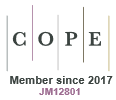Zoonotic risks: Salmonella and Campylobacter in reptiles
Andrea R. McWhorter A * and Harriet Whiley B CA
B
C

Andrea McWhorter is a microbiologist specialising in poultry health and zoonotic pathogens, particularly Salmonella and Campylobacter. Her research also extends to understanding the transmission of foodborne pathogens from farms to the food supply chain, leading to human disease. She collaborates closely with the egg and chicken meat industries to address the challenges of improving bird health and mitigating zoonotic bacteria in food. |

Harriet Whiley is a professor in environmental health and deputy director of the ARC Industrial Transformation Training Centre for Biofilm Research and Innovation. As an environmental microbiologist and environmental health officer her research is aimed at informing design, management and regulatory guidelines to protect human health from pathogens present in the environment. Her research areas include infection control, biofilms, water quality, food safety and risk assessment. |
Abstract
Reptiles are increasingly popular as exotic pets worldwide due to their unique characteristics, species diversity and relatively low maintenance requirements compared to other pets. However, their role as reservoirs for zoonotic pathogens, particularly Salmonella and Campylobacter, presents significant public health challenges. Transmission occurs through direct contact with reptiles, contaminated surfaces or improper hygiene practices, with vulnerable populations being particularly at risk. The prevalence of Salmonella in reptiles varies widely, ranging from 30 to 75.8% in captive populations to 8–14% in wild populations, although research on Campylobacter remains limited. The exotic pet trade, including international imports of reptiles, has further amplified concerns over zoonotic disease transmission and the spread of antibiotic-resistant strains. Effective prevention strategies, such as hygiene education, proper habitat management and regulatory measures, are critical to mitigating these risks.
Keywords: campylobacteriosis, pet ownership, public health, reptiles, salmonellosis, snakes, zoonoses.
Introduction
Worldwide, reptiles are popular exotic pets. Their popularity can be attributed to a variety of factors including their unique physical characteristics, diversity in species, and reasonably low maintenance. Reptile ownership is highest in the USA and Europe.1 In Australia, 2.7% of households own at least one reptile representing over 500,000 animals.2 The global preference for pet reptiles varies by region, but in Australia, the bearded dragon (Pogona vitticeps) and the blue-tongue skink (Tiliqua scincoides) are among the most popular.3
Reptiles, however, are reservoirs for zoonotic pathogens such as Salmonella and Campylobacter, which are significant contributors to the global burden of human gastroenteritis. These bacteria are often found in the faeces and on the skin of reptiles, and they can easily be transmitted to people through direct animal contact or through contaminated surfaces. The transmission of zoonotic diseases to humans poses an increasingly significant public health challenge, particularly as the practice of keeping reptiles as pets continues to rise globally.4,5
Salmonella and Campylobacter in reptiles
The genus Salmonella comprises two species, S. enterica and S. bongori. Salmonella enterica has six subspecies: enterica (I), salamae (II), arizonae (IIIa), diarizonae (IIIb), houtenae (IV) and indica (VI). The majority of salmonellae are classified in S. enterica subsp. enterica, which contains over 2600 different serotypes.6 Members of Salmonella subsp. enterica (I) are primarily responsible for causing disease in humans.7 All other S. enterica subspecies are linked with isolated or sporadic disease in both mammals, reptiles, and birds.7
Salmonella is considered a normal part of the reptile gut microbiota, although salmonellosis in reptiles has been reported.8 Once infected with Salmonella, reptiles can become asymptomatic carriers, intermittently shedding the bacteria in their faeces. The prevalence of Salmonella in reptiles varies significantly depending on geographical location, as well as whether the reptiles are captive or wild. Studies have shown that the carriage rates of Salmonella in reptiles can range from 30 to 75.8% in captive populations,9–13 whereas rates are substantially lower for wild populations (8–14%).11,14 Carriage rates, however, can be affected by seasonal and temporal variation15 and can vary between species. Snakes and lizards tend to have higher prevalence rates of Salmonella compared to Testudines (turtles and tortoises).9–11,14,16 The primary modes of Salmonella acquisition in reptiles are through contaminated food, water or environmental exposure. In a captive setting, feeder mice have been reported to carry strains of S. enterica serovar Typhimurium17 or S. enterica serovar Enteritidis.18,19 Native rodents20 and insects21 have also been shown to carry Salmonella, representing a potential reservoir for wild reptiles.
The genus Campylobacter contains 32 species and 9 subspecies.22 Campylobacter fetus subsp. fetus and C. fetus subsp. testudinum are the most frequently isolated species in reptiles, and they are the predominant causes of human campylobacteriosis linked to reptiles. Additionally, C. jejuni and C. iguaniorum have been commonly isolated from reptiles and are recognised as potential health risks to humans; however, no human infections caused by C. iguaniorum have been reported to date.4 Common lizard hosts identified include bearded dragons, the western beaked gecko (Rhynchoedura odura), Philippine sailfin lizard (Hydrosaurus pustulatus), green iguanas (Iguana iguana), Rankin’s dragon (Pogona henrilawsonii), common chuckwalla (Sauromalus ater) and African fat-tailed gecko (Hemitheconyx caudicinctus), as well as the blotched blue-tongued skink (Tiliqua nigrolutea).4 Campylobacter infection has also been described for five snake species including western hognose snake (Heterodon nasicus), beauty rat snake (Orthriophis taeniurus), boa constrictor (Boa constrictor), reticulated python (Python reticulatus) and amethystine python (Morelia amethistina).4 Research on the prevalence of Campylobacter in reptiles is much more limited compared to studies on Salmonella. The utilisation of polymerase chain reaction (PCR) for detecting Campylobacter species in reptiles yields a higher detection rate compared to culture methods,23 which poses a challenge when comparing studies that employ different diagnostic approaches. A comprehensive survey conducted in the Netherlands examined the prevalence of Campylobacter species in captive reptiles from three zoos, a diagnostic laboratory, a pathology lab, a veterinary hospital specialising in reptiles and amphibians, and a pet shop. Campylobacter was detected with prevalence of 44.8% and the majority of isolates were C. fetus subsp. fetus.24 In central Australia, 30% of surveyed wild reptiles tested positive for C. jejuni; however, this study did not investigate the prevalence of other reptile associated Campylobacter species.25
Transmission of Campylobacter and Salmonella in reptiles has not been well studied, but similarities with birds are likely to occur. In poultry, Campylobacter colonises the intestinal microbiota and has been found in the oviduct but contamination on eggs or in hatchlings is infrequent. Transmission for poultry primarily occurs by the faecal–oral route. Similarly, Salmonella species also colonise the gut microbiota of poultry. Vertical transmission of Salmonella most commonly is associated with the serotype S. enterica serovar Enteritidis. As with Campylobacter, Salmonella colonises the gastrointestinal tract through faecal–oral transmission.
Reptile–human transmission
Campylobacter and Salmonella species are the two most common causes of food-borne bacterial gastrointestinal disease in humans. Humans commonly become infected with these bacterial species following consumption of contaminated fruit, vegetables, dairy, meat, poultry meat or eggs. Non-food-related risk factors associated with Campylobacter and Salmonella infections include direct or indirect contamination with wildlife and animal faces includes, birds, reptiles, amphibians, livestock and pets.4,8 In situations where reptiles are kept as pets, transmission may occur through cross contamination or contact with their faeces during terrarium or vivarium cleaning. Indirect transmission of bacteria can also occur. Vacuum cleaners, for example, have previously been identified as a potential source of bacteria and the disturbance of dust can disperse bacteria at concentrations as high as 105 colony forming units per minute.26 In communities where reptiles are raised for food, the consumption of reptilian cuisine also increases the risk of Campylobacter and Salmonella infections.4,8
One health and exotic reptile trade
The growing demand for exotic pets is coupled with the potential for international importation, which can contribute to the globalisation of diseases. In Australia, it is not legal to import exotic reptiles. However, nearly 30 years ago, Sweden abolished the requirement for a certificate confirming that imported animals were Salmonella free.27 Between 2000 and 2006, the USA imported over 1.4 billion wild reptiles from Asia; a region known for high rates of antibiotic resistance.28 In 2015, 80% of imported wild-caught Indonesian Tokay geckos (Gekko gecko) carried Salmonella and many isolates were found to possess resistance to one or more antibiotics.29 Fluoroquinolones and third-generation cephalosporins are among the most commonly used antibiotics in reptile medicine,30 which poses significant concern. These drugs are classified by the World Health Organization as ‘highest priority critically important antimicrobials’ for human medicine. To date, imported animals for the pet trade have not been systematically surveyed for Campylobacter. However, wild reptiles have been found to be infected with this bacterium, with documented instances in both Europe and Australia.23
Conclusion
Reptiles are commonly carriers of Campylobacter and Salmonella. Education about the potential health risks associated with reptile ownership is crucial in ensuring prevention of transmission of zoonotic pathogens.8 Vulnerable populations, including children, the elderly, the immunocompromised or individuals with chronic illness,4,5 are particularly at risk for infections linked to reptile handling and consumption of foods containing reptile meat. It is important for reptile owners to practise good hygiene, such as thoroughly washing hands after handling their pets. Regular cleaning and disinfecting of habitats and avoiding free roaming reptiles, particularly in areas where food is prepared or consumed, are also important ways that owners can mitigate Salmonella or Campylobacter. Implementation of proper hygiene and husbandry practices in both captive and wild reptile management will minimise the risk of the zoonotic transmission of Salmonella and Campylobacter.
Declaration of funding
A. R. McWhorter received funding from Zoos SA and The University of Adelaide, and H. Whiley received funds from Flinders University.
References
1 Auliya M et al. (2016) Trade in live reptiles, its impact on wild populations, and the role of the European market. Biol Conserv 204, 103-119.
| Crossref | Google Scholar |
2 Howell TJ et al. (2020) Self‐reported snake management practices among owners in Victoria, Australia. Vet Rec 187, 114.
| Crossref | Google Scholar | PubMed |
3 Valdez JW (2021) Using Google trends to determine current, past, and future trends in the reptile pet trade. Animals 11, 676.
| Crossref | Google Scholar | PubMed |
4 Masila NM (2020) Zoonotic and public health implications of Campylobacter species and squamates (lizards, snakes and amphisbaenians). Pathogens 9, 799.
| Crossref | Google Scholar | PubMed |
5 Whiley H et al. (2017) A review of Salmonella and squamates (lizards, snakes and amphisbians): implications for public health. Pathogens 6, 38.
| Crossref | Google Scholar | PubMed |
7 Lamas A et al. (2018) A comprehensive review of non-enterica subspecies of Salmonella enterica. Microbiol Res 206, 60-73.
| Crossref | Google Scholar | PubMed |
8 Pees M et al. (2023) Salmonella in reptiles: a review of occurrence, interactions, shedding and risk factors for human infections. Front Cell Dev Biol 11, 1251036.
| Crossref | Google Scholar | PubMed |
9 Bjelland AM et al. (2020) Prevalence of Salmonella serovars isolated from reptiles in Norwegian zoos. Acta Vet Scand 62, 3.
| Crossref | Google Scholar |
10 Chen C-Y et al. (2010) Prevalence and antimicrobial susceptibility of salmonellae isolates from reptiles in Taiwan. J Vet Diagn Invest 22, 44-50.
| Crossref | Google Scholar | PubMed |
11 Scheelings TF et al. (2011) Prevalence of Salmonella in Australian reptiles. J Wildl Dis 47, 1-11.
| Crossref | Google Scholar | PubMed |
12 Pasmans F et al. (2005) Characterization of Salmonella isolates from captive lizards. Vet Microbiol 110, 285-291.
| Crossref | Google Scholar | PubMed |
13 McWhorter A et al. (2021) In vitro invasiveness and antimicrobial resistance of Salmonella enterica subspecies isolated from wild and captive reptiles. Zoonoses Public Health 68, 402-412.
| Crossref | Google Scholar | PubMed |
14 Gorski L et al. (2013) Diversity of pulsed-field gel electrophoresis pulsotypes, serovars, and antibiotic resistance among Salmonella isolates from wild amphibians and reptiles in the California central coast. Foodborne Pathog Dis 10, 540-548.
| Crossref | Google Scholar | PubMed |
15 Parsons SK et al. (2015) Spatial variation and survival of Salmonella enterica subspecies in a population of Australian sleepy lizards (Tiliqua rugosa). Appl Environ Microbiol 81, 5804-5811.
| Crossref | Google Scholar | PubMed |
16 Saelinger CA et al. (2006) Prevalence of Salmonella spp. in cloacal, fecal, and gastrointestinal mucosal samples from wild North American turtles. J Am Vet Med Assoc 229, 266-268.
| Crossref | Google Scholar | PubMed |
17 Harker K et al. (2011) An outbreak of Salmonella Typhimurium DT191a associated with reptile feeder mice. Epidemiol Infect 139, 1254-1261.
| Crossref | Google Scholar | PubMed |
18 Kanagarajah S et al. (2018) Whole genome sequencing reveals an outbreak of Salmonella Enteritidis associated with reptile feeder mice in the United Kingdom, 2012–2015. Food Microbiol 71, 32-38.
| Crossref | Google Scholar | PubMed |
19 Marin C et al. (2018) Commercial frozen mice used by owners to feed reptiles are highly externally contaminated with Salmonella enteritidis PT8. Vector Borne Zoonotic Dis 18, 453-457.
| Crossref | Google Scholar | PubMed |
20 Parsons SK et al. (2011) Substructure within Salmonella enterica subsp. enterica isolates from Australian wildlife. Appl Environ Microbiol 77, 3151-3153.
| Crossref | Google Scholar | PubMed |
21 Lee P, Mackerras I (1955) Salmonella infections of Australian native animals. Aust J Exp Biol Med Sci 33, 117-125.
| Crossref | Google Scholar |
22 Costa D, Iraola G (2019) Pathogenomics of emerging Campylobacter species. Clin Microbiol Rev 32, e00072-18.
| Crossref | Google Scholar | PubMed |
23 Olvera-Ramírez AM et al. (2023) A systematic review on the role of wildlife as carriers and spreaders of Campylobacter spp. Animals 13, 1334.
| Crossref | Google Scholar | PubMed |
24 Gilbert MJ et al. (2014) Occurrence, diversity, and host association of intestinal Campylobacter, Arcobacter, and Helicobacter in reptiles. PLoS ONE 9, e101599.
| Crossref | Google Scholar | PubMed |
25 Whiley H et al. (2016) Detection of Campylobacter jejuni in lizard faeces from central Australia using quantitative PCR. Pathogens 6, 1.
| Crossref | Google Scholar | PubMed |
26 Knibbs LD et al. (2012) Vacuum cleaner emissions as a source of indoor exposure to airborne particles and bacteria. Environ Sci Technol 46, 534-542.
| Crossref | Google Scholar | PubMed |
27 Woodward DL et al. (1997) Human salmonellosis associated with exotic pets. J Clin Microbiol 35, 2786-2790.
| Crossref | Google Scholar | PubMed |
28 Smith KF et al. (2009) Reducing the risks of the wildlife trade. Science 324, 594-595.
| Crossref | Google Scholar | PubMed |
29 Casey CL et al. (2015) The carriage of antibiotic resistance by enteric bacteria from imported tokay geckos (Gekko gecko) destined for the pet trade. Sci Total Environ 505, 299-305.
| Crossref | Google Scholar | PubMed |
30 Hedley J et al. (2021) Antibiotic stewardship for reptiles. J Small Anim Pract 62, 829-839.
| Crossref | Google Scholar | PubMed |
 Andrea McWhorter is a microbiologist specialising in poultry health and zoonotic pathogens, particularly Salmonella and Campylobacter. Her research also extends to understanding the transmission of foodborne pathogens from farms to the food supply chain, leading to human disease. She collaborates closely with the egg and chicken meat industries to address the challenges of improving bird health and mitigating zoonotic bacteria in food. |
 Harriet Whiley is a professor in environmental health and deputy director of the ARC Industrial Transformation Training Centre for Biofilm Research and Innovation. As an environmental microbiologist and environmental health officer her research is aimed at informing design, management and regulatory guidelines to protect human health from pathogens present in the environment. Her research areas include infection control, biofilms, water quality, food safety and risk assessment. |


